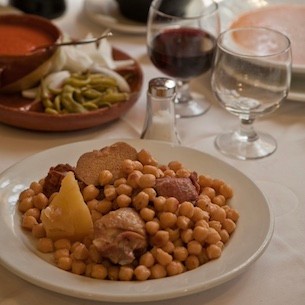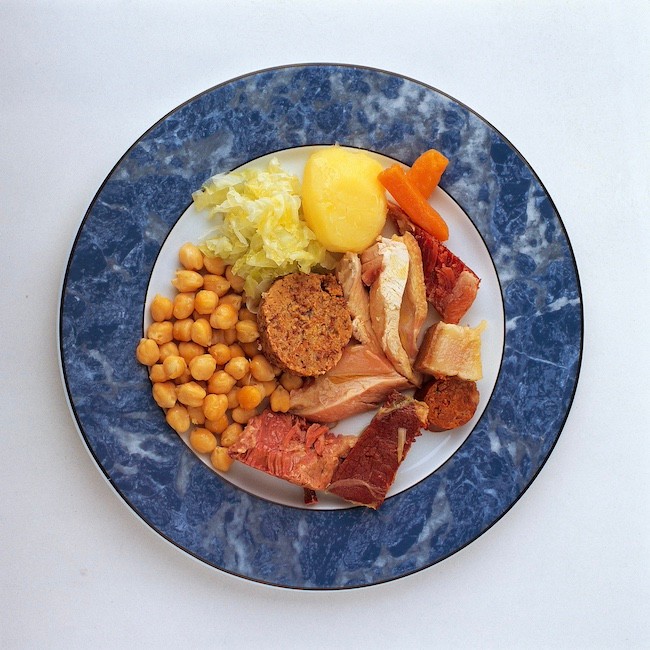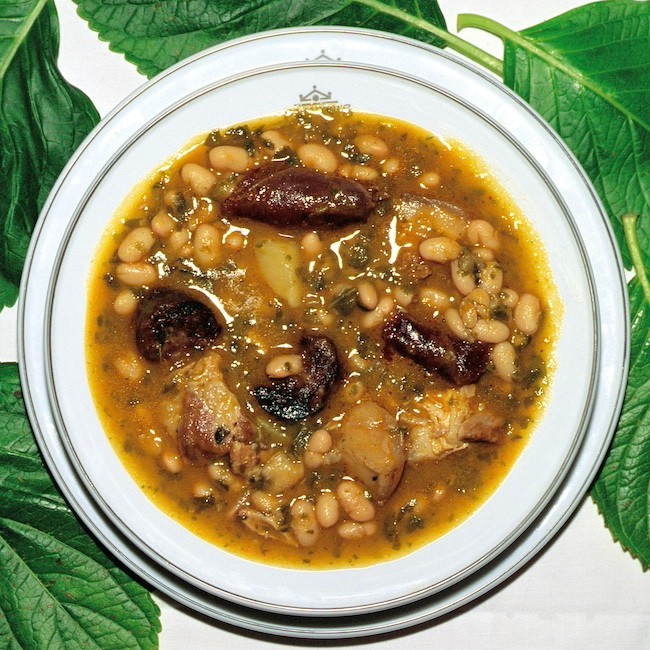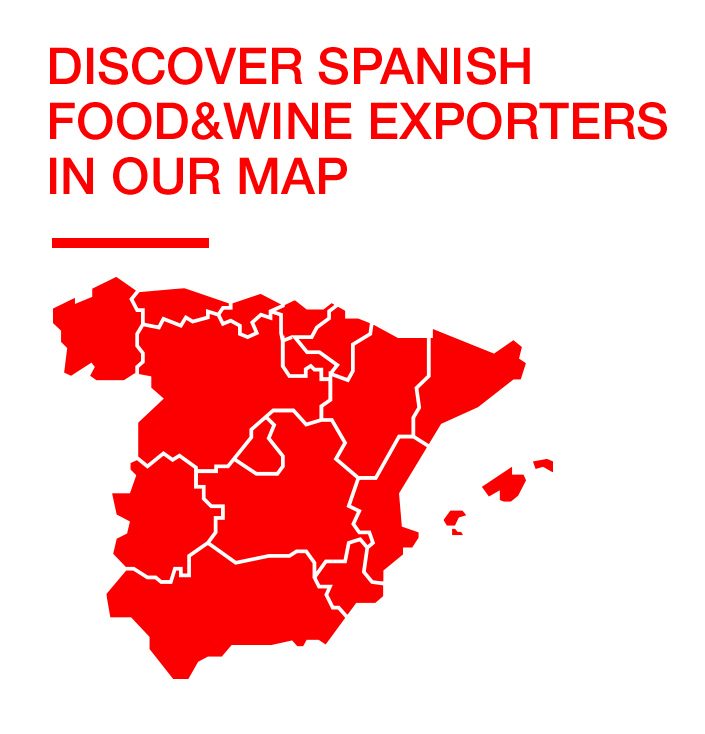.png.transform/rendition-xs/image_image%20(1).png)
Cocido(s), All About the Traditional Spanish Stews
From Madrid to Galicia and from Cantabria down to Andalusia, let's take a look at the different versions of cocido throughout Spain
When the cold weather hits, Spaniards prepare stew. The name cocido defines a variety of dishes that can be found throughout Spain and share chickpeas as the main ingredient, which is accompanied by broth and a variety of meats. There are several theories about the origin of cocido, although it's commonly believed to come from the dish olla podrida (rotten pot), which was served in the Middle Ages.
Although the word podrida in Spanish means rotten—which has led to misunderstandings—it's actually a version of the word poderida (poderosa, powerful), since only the wealthy and powerful had access to this dish; or it might refer to the "powerful" ingredients, which gave power and strength to the stew (and to the person who ate it).
The best-known cocido is, without a doubt, cocido madrileño. The base is the chickpea, which was possibly brought to Spain by the Carthaginians and was already used by the Romans. Small chickpeas are usually used (such as the Pedrosillano, which is grown in different regions in the center of the country and is practically spherical). However, it's also possible to use chickpeas from Garbanzo de Fuentesaúco PGI, which comes from an area in Zamora (Castile-León). These are slightly bigger.

In the cocido, the chickpeas and meats— beef, hen, and ham bones—are cooked together in the pot, with the chorizo and morcilla (black pudding), to add flavor to the dish. Cabbage and carrots are also included in the stew. This is a cooking process that lasts for many hours during which the excess of fat in the broth is removed several times.
Eventually, a noodle soup is made with the resulting broth, which is served as the first dish. The second dish would be chickpeas and vegetables. For the third dish, the meats would be served. Of course, every customer has its own way of eating cocido, mixing chickpeas with the soup or eating the second and third dishes altogether.

Every region has its own cocido
But cocido extends beyond Madrid in recipes that are similar but which include small changes. In Cantabria, there's Lebaniego, which has many similarities with Madrid-style cocido when you look at the ingredients. In this dish, the base is small chickpeas from Potes, with potatoes and cabbage. It's also served with compango (chorizo, black pudding, bacon, and ham bone), as well as beef. It's accompanied by a relleno made with bread crumbs, egg, chorizo, and parsley (which is sometimes also prepared in the Madrid-style cocido). Here also, the soup is served as the first dish.
Galicia has a well-known cocido, from Lalín, named after the town where it's typically served. In addition to the chickpeas, meat, and vegetables, this version is unique as it includes a large variety of pork, potatoes, and turnip greens.
Cocido Maragato, prepared in the Maragatería region of León, in Castile- León, is also very interesting. This dish is unique in that it's eaten the other way around: you start with the meat, followed by the chickpeas and vegetables, and you finish with the soup, almost like a pre-dessert.

Chickpeas and beans
Are chickpeas essential in cocido? Not always. There's another cocido that's prepared in Cantabria and which is, in fact, the most representative of this region in the north of Spain. Cocido Montañés is a stew whose main components are white beans and berza (a kind of cabbage, usually the Asa de Cántaro variety). The meats, that include chorizo, pig ribs, blood sausage, and pig’s ears, are served with it.
There are also cocidos where the chickpeas and beans are mixed together. An example is Andalusian cocido, which can be made with chickpeas from the area, such as Garbanzo de Escacena PGI, located in a region between Seville and Huelva. These are larger in size and have a milky color. It's mixed with habichuelas (small white beans) and contains more vegetables than meat: potato, carrot, and leek as opposed to chorizo and pancetta.
The main ingredients for cocido
The coldest months of the year in Spain are the ideal time to go out for cocido, but it can also be prepared at home (and anywhere!) if the ingredients are available. The aforementioned chickpeas with PGIs (Fuentesaúco and Escacena) can be found all over the world, as well as Pedrosillanos, from different producers.
The same is true for the sausages, which are essential components of these recipes and can be easily found. In the case of chorizo and black pudding, these can be found in Asturias, Castile-León, the Basque Country...
There are even ready-to-eat versions of Madrid-style cocido from brands like Litoral and Carretilla. They're perfect for anyone who simply wants to warm up and enjoy Madrid's most emblematic dish during the cold weather. You just need a spoon… and some bread nearby to dip in!



